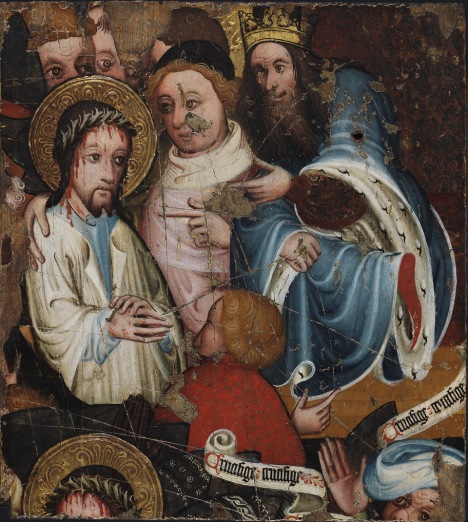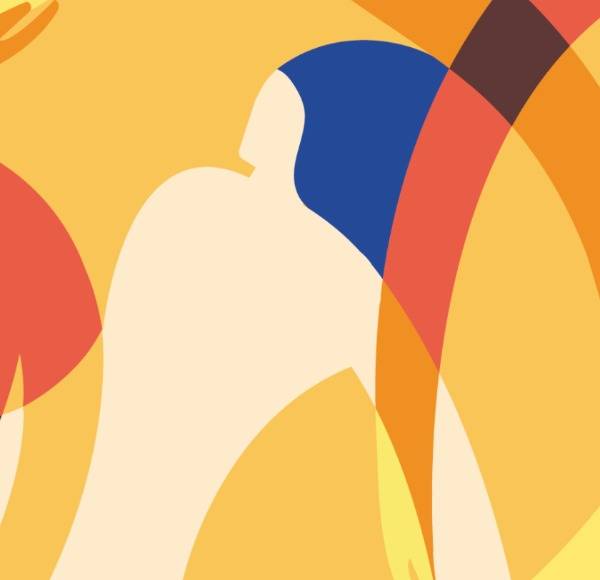
Tate Britain’s history of physical attacks on art in this country begins in the sixteenth century with the Reformation. There is nothing, for instance, about what happened to all the statuary, painting and mosaics that the Romans left behind when they departed, nothing about what was done to pagan art when the early Christians became established, or what later pagan invaders did to early Christian art in return, the record for all these periods being patchy.
This means that the show starts with the furies unleashed against the English Catholic church and its centuries-old stock of religious imagery. It began in the reign of Henry VIII, rose to a peak of destruction under Edward VI, saw a slight reverse with the rule of Queen Mary and reappeared with Elizabeth I. The wrecking continued intermittently until a late eruption of vandalism under the puritans in the seventeenth century. When it finally abated, England had gone through perhaps the most severe period of violence against imagery in Reformation Europe. The iconoclasts, in their horror of idolatry, wanted the obliteration of all religious art. Their ambition to destroy it all, to wipe out every last scrap of imagery is set out with clarity in a royal injunction of 1547: “Take away, utterly extinct and destroy ... all shrines ... pictures, paintings and other monuments of ... idolatry and superstition, so that there remain no memory of the same.”
The first rooms of the exhibition contain statues that have had heads or arms lopped off, paintings of saints or bible figures where the faces have bee scratched out and other evidence of Protestant anger and disgust. What is missing is any feeling of how these events were popularly perceived. Did people deplore the loss of their cherished religious culture, or did they welcome the lifting of Catholic authority? We hear a lot from the iconoclasts themselves, but nothing from the people who lived with the results of their work.
Whatever had been awakened in the English at that time was unprecedented and would not return. The rest of the show is a weak thing in comparison. Apart from some satirical engravings on coins and a few fragments of statues broken for political reasons, the eighteenth century is more or less skipped – the Augustans being too civilised and ironical to indulge in art-wrecking. The nineteenth and early twentieth centuries were the great periods of political activism and see an increase in violence against art. Irish nationalists blowing-up British statues in Dublin is easy enough to understand. More curious was the Suffragettes’ attachment to trashing paintings. The slashing of the Rokeby Venus is well known, but they also took hammers and knives to pre-Raphaelite portraits, the gorgeous women in them seeming too much like idealisations of submissive femininity. One woman also took a knife to James Singer Sargent’s portrait of Henry James. Apparently she had no idea who the subject of the painting was. Looked at one way, it has to be admitted that the picture does give an impression of a well-fed, complacent patrician, rather than the novelist who was the greatest male interpreter of women’s inner life there has ever been.
Another room houses the remains of the Destruction in Art Symposium of 1966, where participants did things like take an axe to a piano and record the results. Yoko Ono turns up in a video having her clothes cut off her with a pair of scissors. Not much of this, strictly speaking, is iconoclasm.
Since then, people have rarely been bothered enough by art to have a physical go at it, indicating either an increased civility and reverence for art or, more likely, indifference. When the American artist Carl Andre sold a pile of bricks to the Tate in 1972 there was a real spasm of popular and tabloid-fed anger, leading one man to slosh blue paint over the thing. At the time it seemed like philistinism but, looking back, one can see how bad spending money (public money at that) on bricks – eloquent of Britain’s fading industrial past – must have appeared at a time when so may bricklayers were being pushed out of work.
The final works in the show are from the Chapman brothers’ series of paintings One Day You Will No Longer Be Loved. The artists took genuine nineteenth century oil portraits and added facial disfigurements. In their time the Chapmans have been called controversial and iconoclastic (did they have the right to destroy historical artworks?) but they seem positively classy when viewed alongside the real thing from the 1500s. In fact we’re lucky that nothing after the Restoration really cuts it as iconoclasm compared to that earlier holocaust. All the passion has gone.
Art under Attack: Histories of British Iconoclasm at Tate Britain until 5 January 2014

